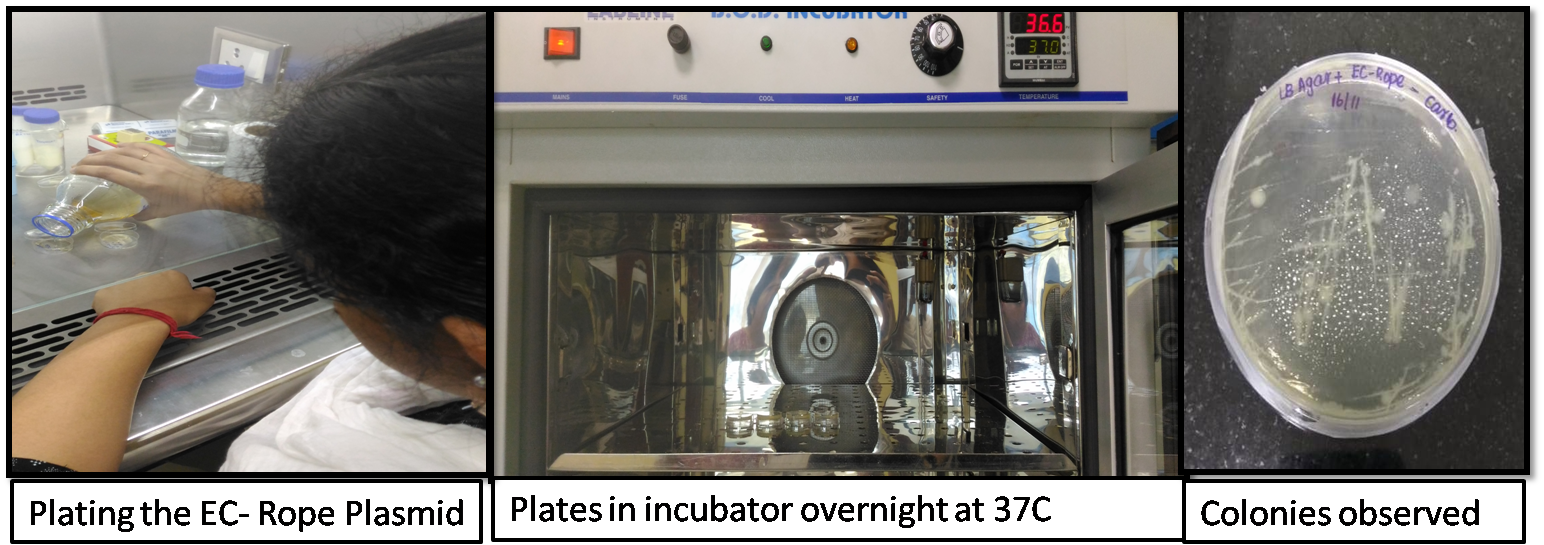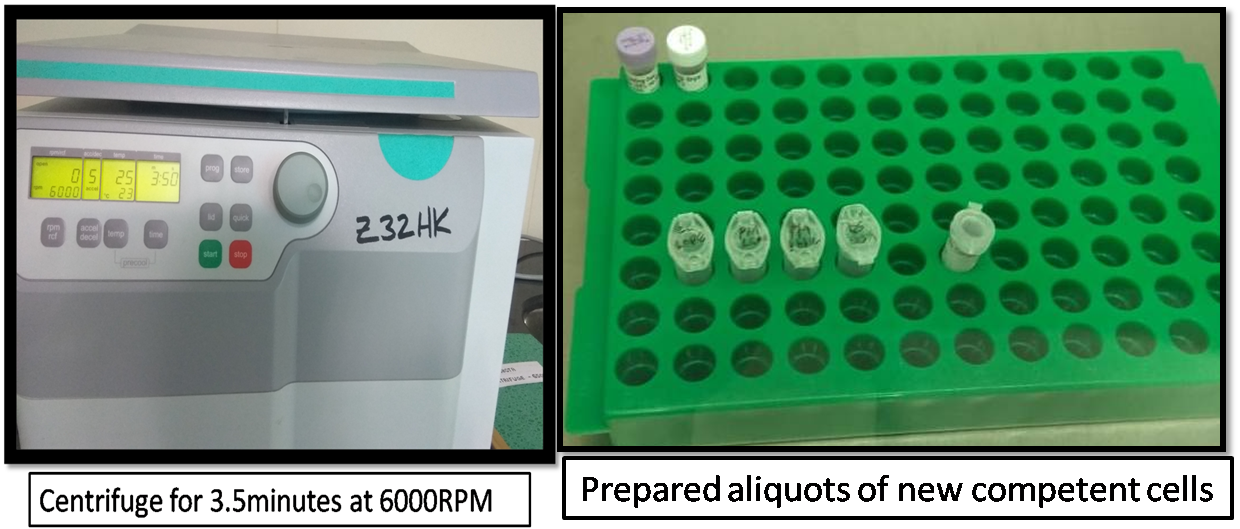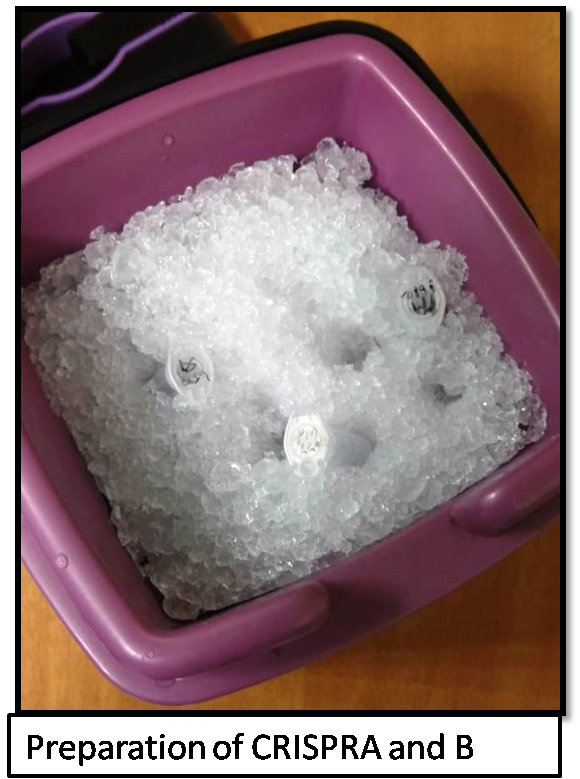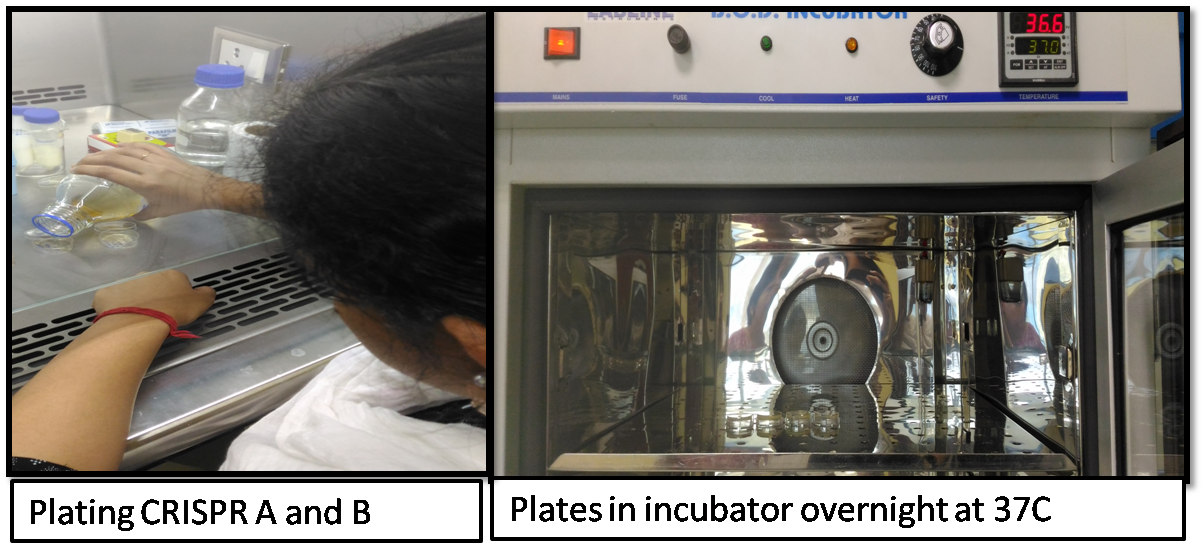- Transformation of E.Coli competent cells with the EC-Rope plasmid using heat- shock transformation method.
- The E.coli competent cells were kept on ice.
- We added around 3ul of the EC- Rope plasmid to the competent cells
- The cells were mixed by gently flicking the eppendorf.
- A water bath at 42 degrees was kept in a magnetic stirrer
- As soon as the EC- rope plasmid was added, the cells were kept in 42 degrees for 90 seconds and then at ice for 10 minutes.
- After the transformation, 500ul of LB media was added to the cells and kept in shaker at 37 degrees for 1 hour.
- The cells were then spinned down at 6000 rpm for 3.5 minutes.
- The cells were later plated on LB agar plates with 25ug/ml Carbenicillin and incubated at 37 degrees.
- The colonies were observed in the plate after incubation at 37 degrees overnight.

- Preparation of new competent cells that contain the EC Rope plasmid
- The colonies grown overnight was inoculated in 5ml of LB medium with 25ug/ml overnight.
- Once the growth was observed, we centrifuged for 5 minutes at 6000 RPM and promptly removed the supernatant.
- 10ml of chilled glycerol was added to resuspend the pellet and centrifuged for 3.5 minutes at 6000 RPM.
- After washing with glycerol for 4 to 5 times, the cells were centrifuged for 3.5minutes at 6000 RPM.
- 100ul of 10% glycerol was added to the washed pellet.
- 2 aliquots of 50ul cells were sealed with parafilm and freezed until use.

- Preparation of the plasmid mixtures
- 10ul of CRISPR-A mixture with Ds-cas9 + PM-bla and CRISPR-B mixture with Ds-cas9 + PM-sp22a-!con was prepared.

- Transformation of competent cells with the two plasmid mixtures from step 4
- The 2 aliquots of competent cells were kept in ice and about 3ul of CRISPR-A and CRISPR-B was added to the 2 aliquots of competent cells.
- The cells after gently flicking were kept at 42 degrees for 90 seconds and then shifted to ice for 10 minutes.
- 500 ul of LB media was added to the transformed cells (both CRISPR-A and CRISPR-B) and kept in shaker at 37 degrees for 1 hour.
- The cells were then spinned down at 6000rpm for 3.5 minutes.
- Plating the CRISPR-A and CRISPR-B cells
- The CRISPR-A and CRISPR-B cells were plated on double selective LB-Agar plates containing Spectinomycin at 50 ug/mL, and Chloramphenicol at 35 ug/mL
- The plates were incubated at 37 degrees overnight


-
Why did colonies carrying the CRISPR B mix grow and the CRISPR A mix fail? Hypothesize what happened. Feel free to use the plasmid maps provided as a guide.
The CRISPR-B has antibiotic resistance gene which caused the colonies to grow and the CRISPR-A did not have any resitance gene, so the growth of the bacteria was inhibited using the antibiotics.